Abstract
1. Single fibre pulmonary stretch receptor discharge was recorded in dogs on cardiopulmonary bypass. 2. Inhalation of CO2 depressed pulmonary stretch receptor discharge despite the absence of changes in arterial PCO2. This effect was particularly marked with airway CO2 levels below 5%. 3. Changing arterial PCO2, without changing airway CO2, had only small and insignificant effects on pulmonary stretch receptor discharge. 4. The effect of changes in airway CO2 on pulmonary stretch receptor discharge was rapid and correlated well in time with the reflex tachypnoea produced when CO2 was inhaled in conditions of cardiopulmonary bypass. 5. Stimulation of the central end of the cut vagus nerve was triggered from simultaneously recorded action potentials from a single pulmonary stretch receptor. 6. In these conditions, the reflex response to CO2 could be simulated provided that the pulmonary stretch receptor had an end-expiratory discharge. 7. It is suggested that the vagally mediated tachypnoeic response to changes in airway CO2 seen in conditions of cardiopulmonary bypass is due to the effect of CO2 on the end-expiratory discharge of pulmonary stretch receptors.
Full text
PDF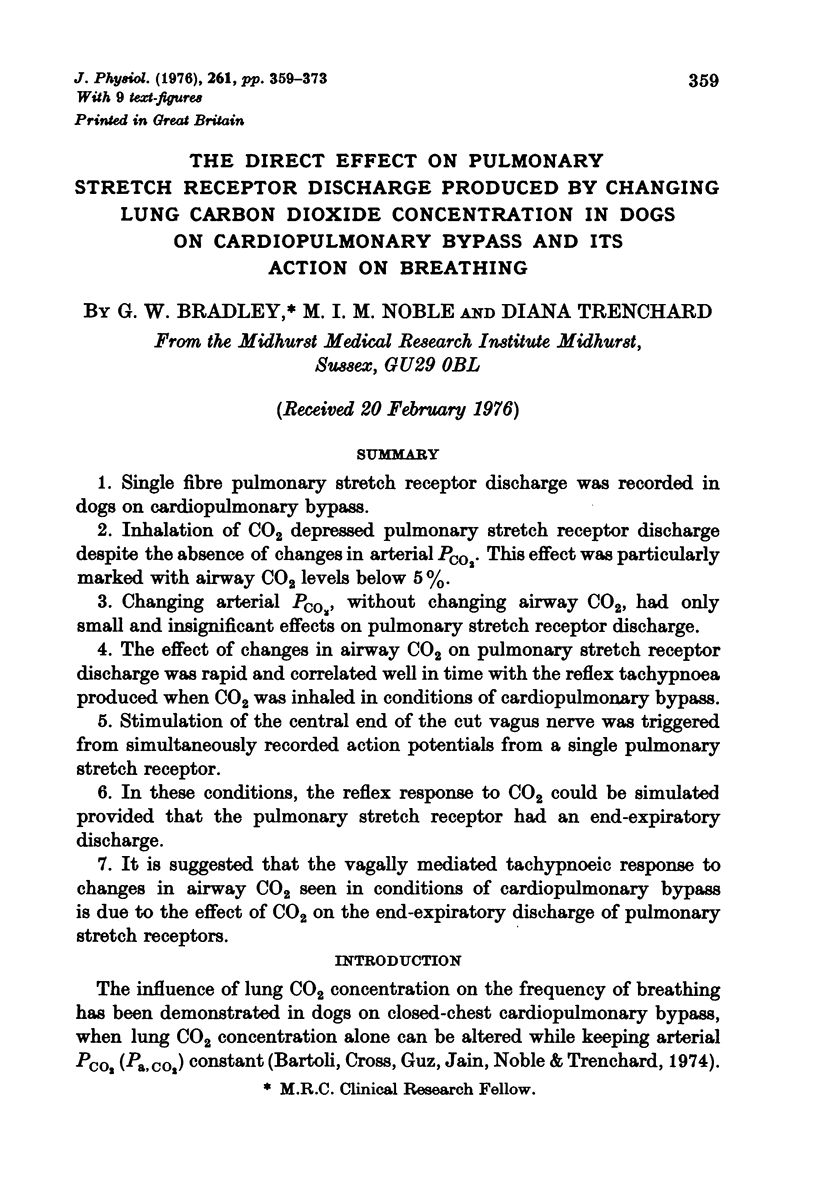

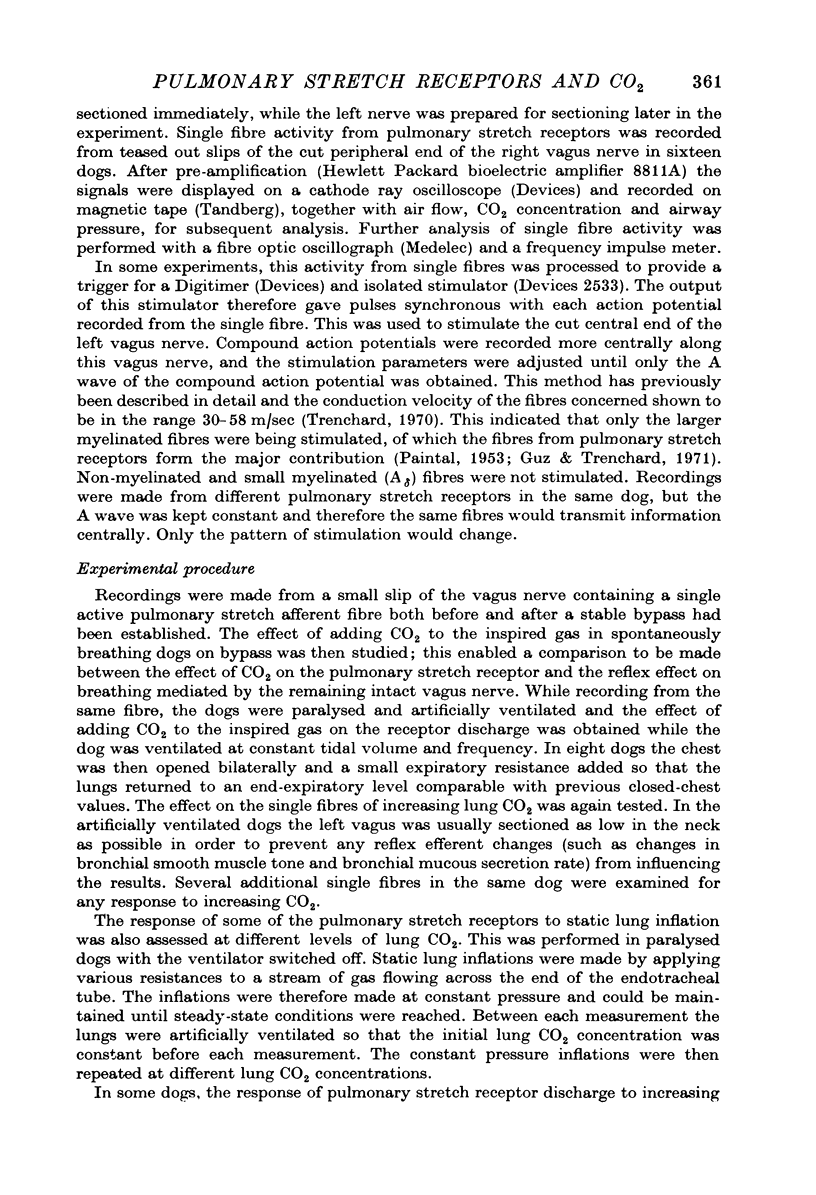
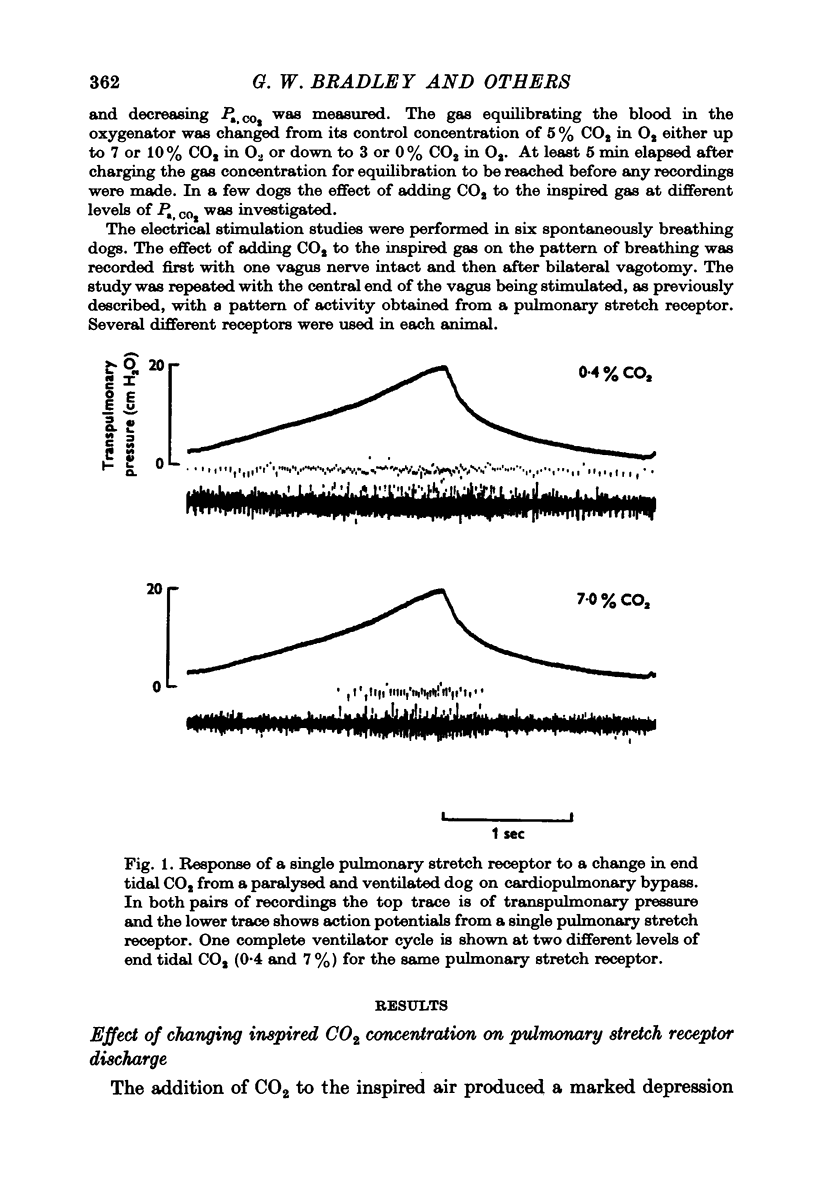
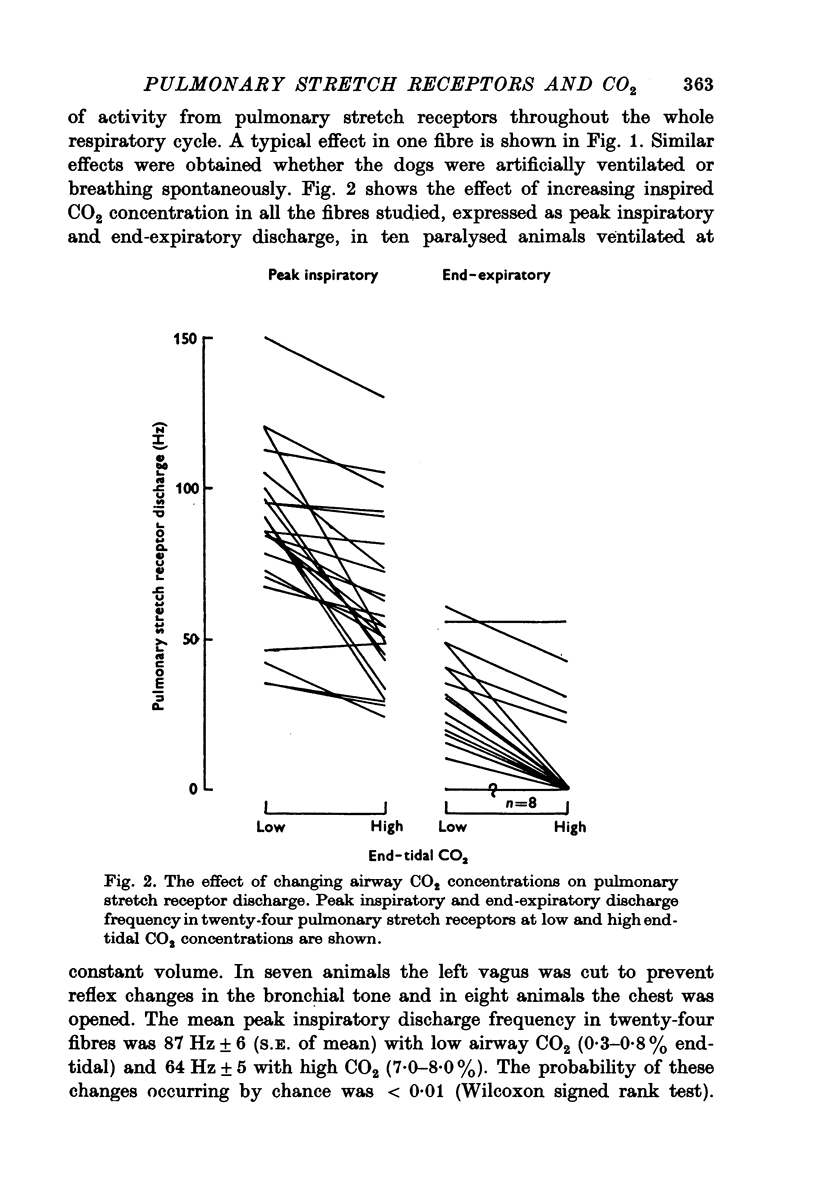
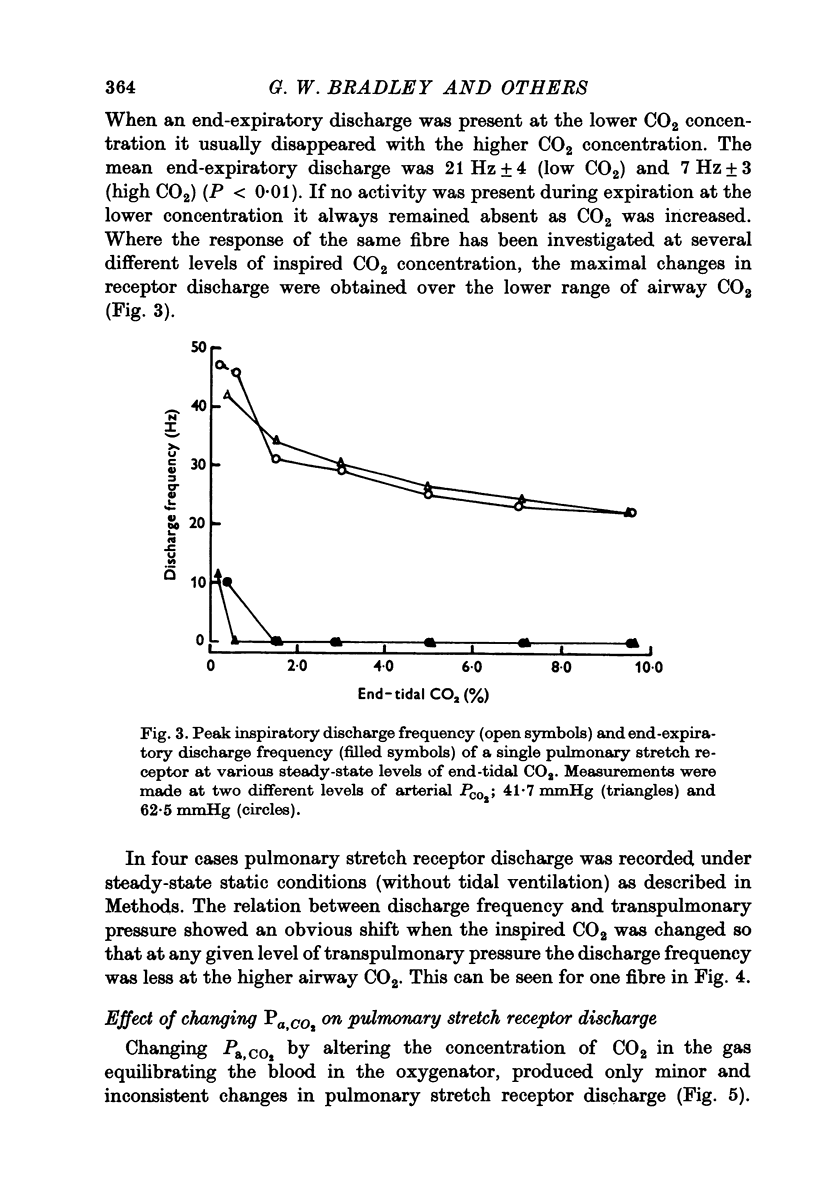
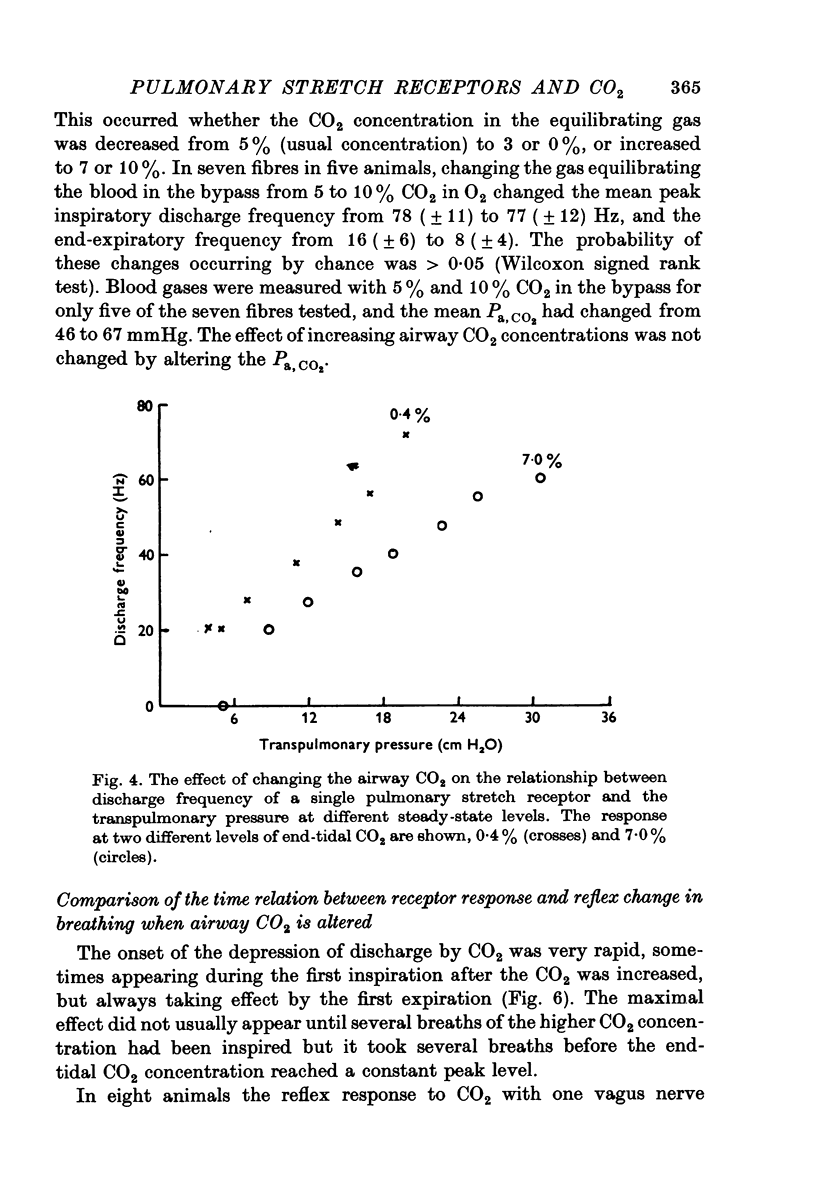
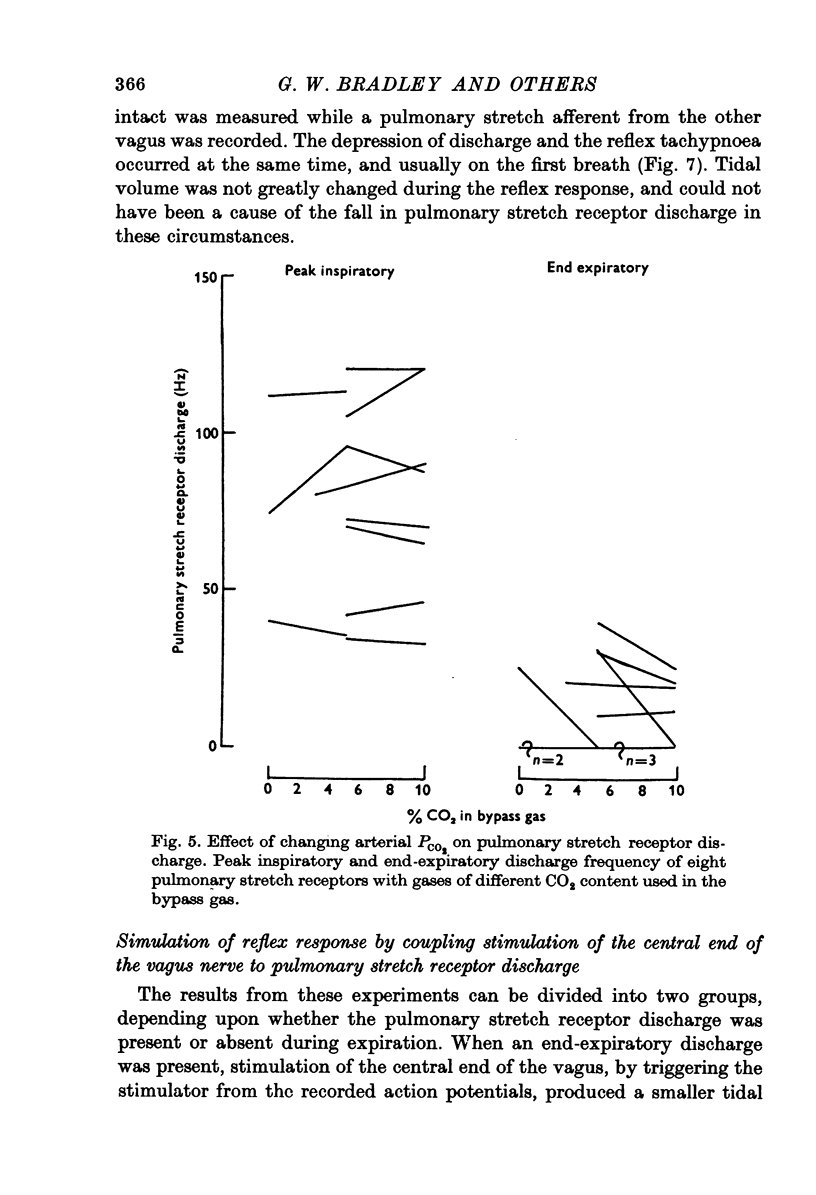
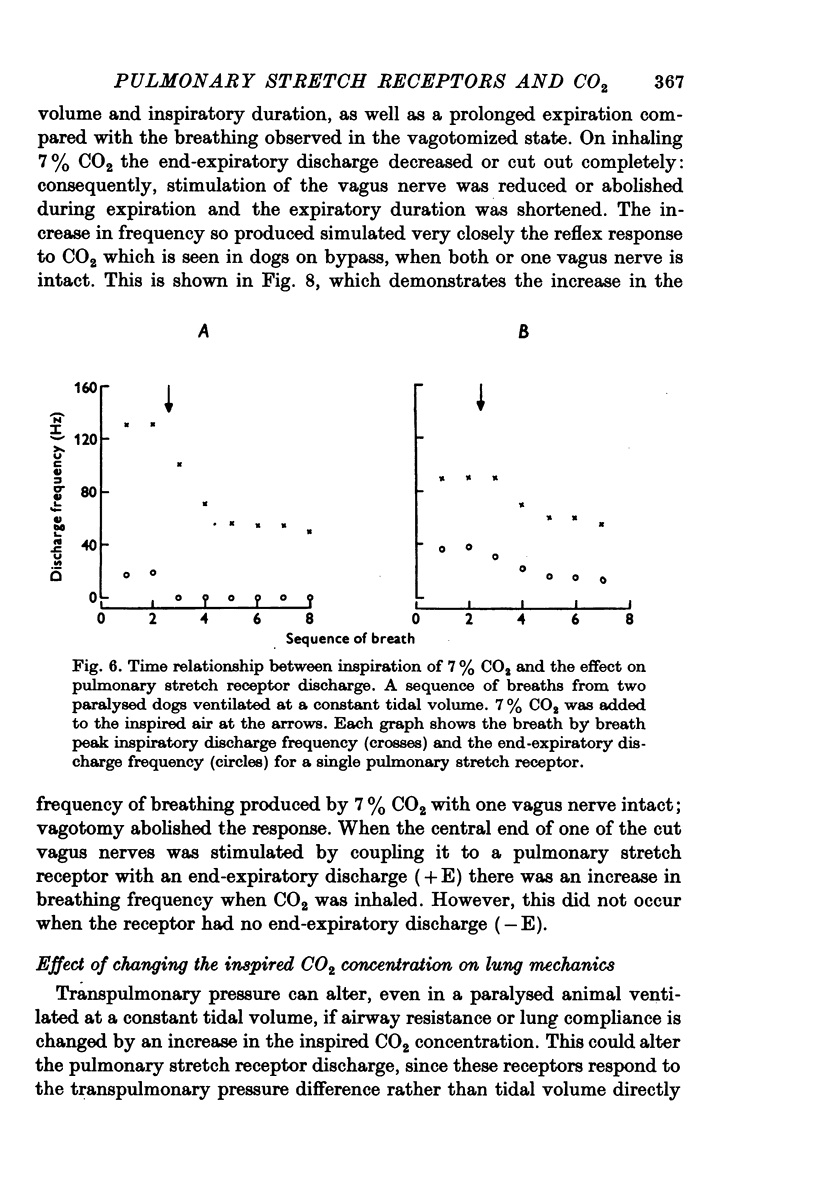
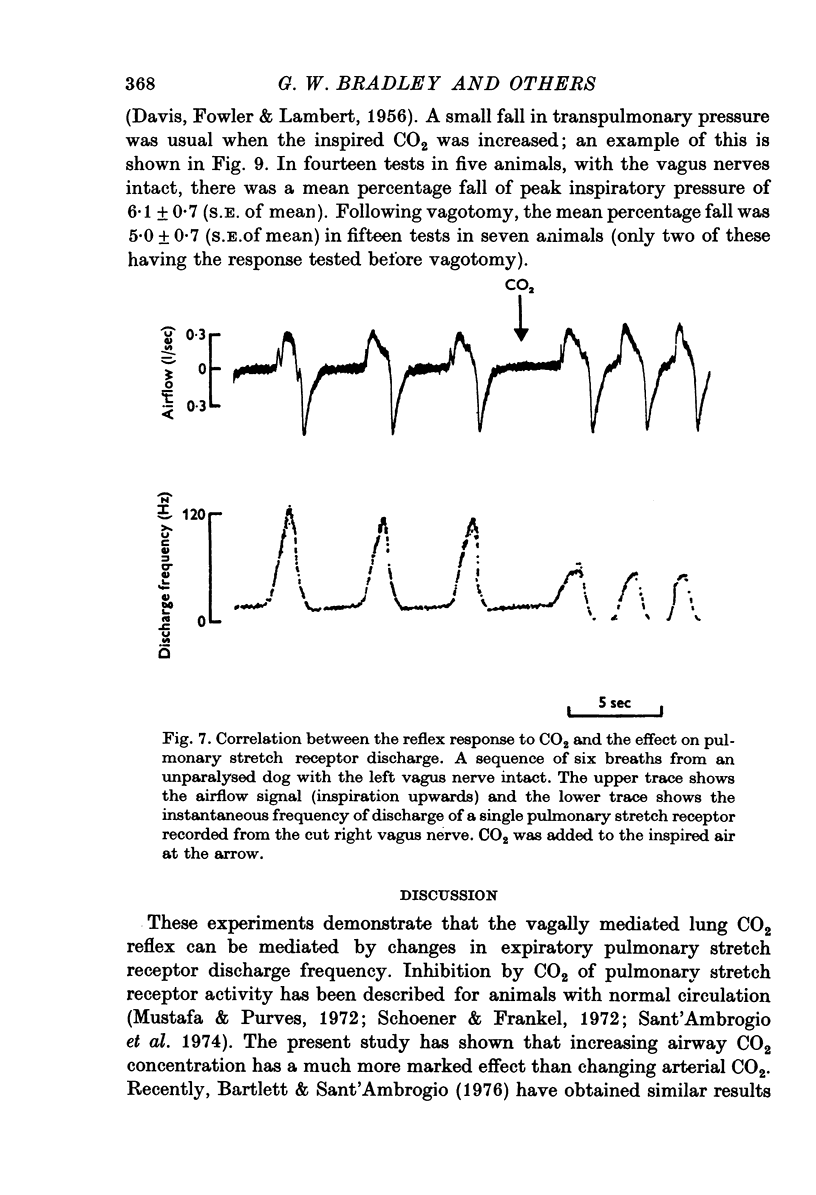
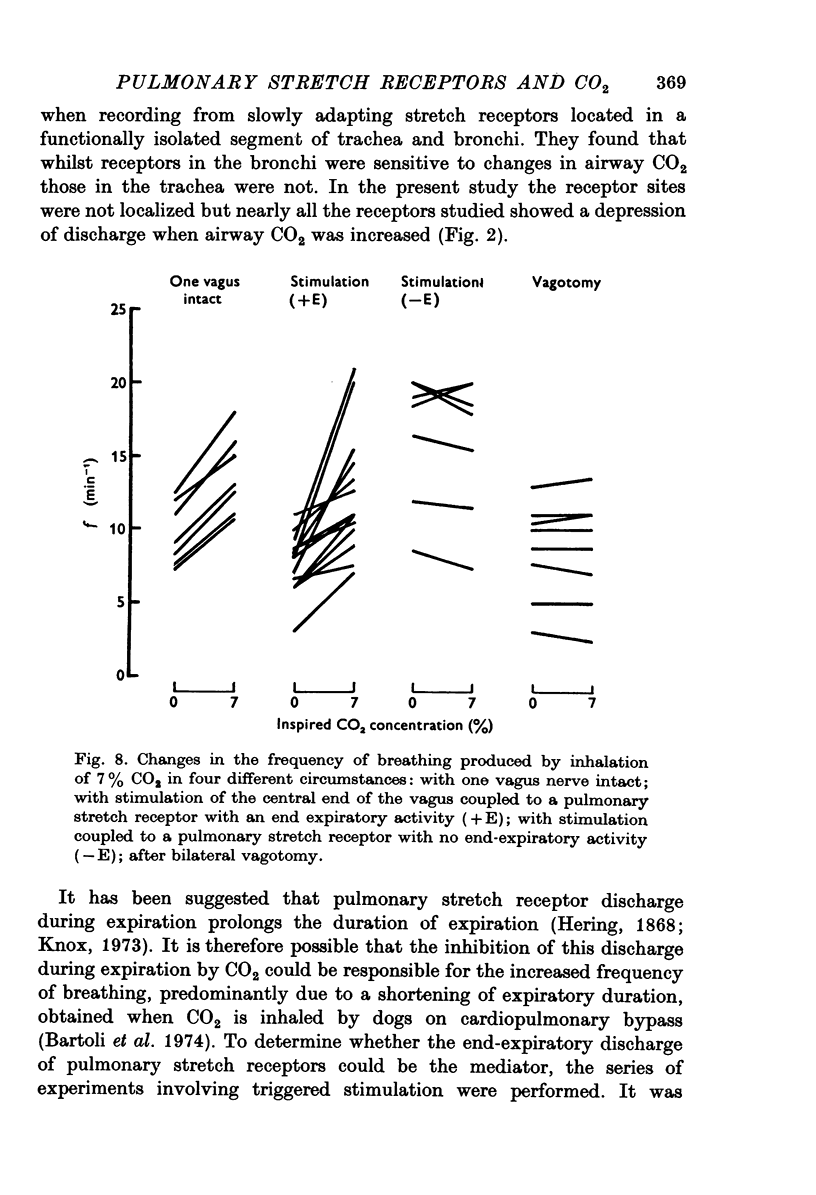
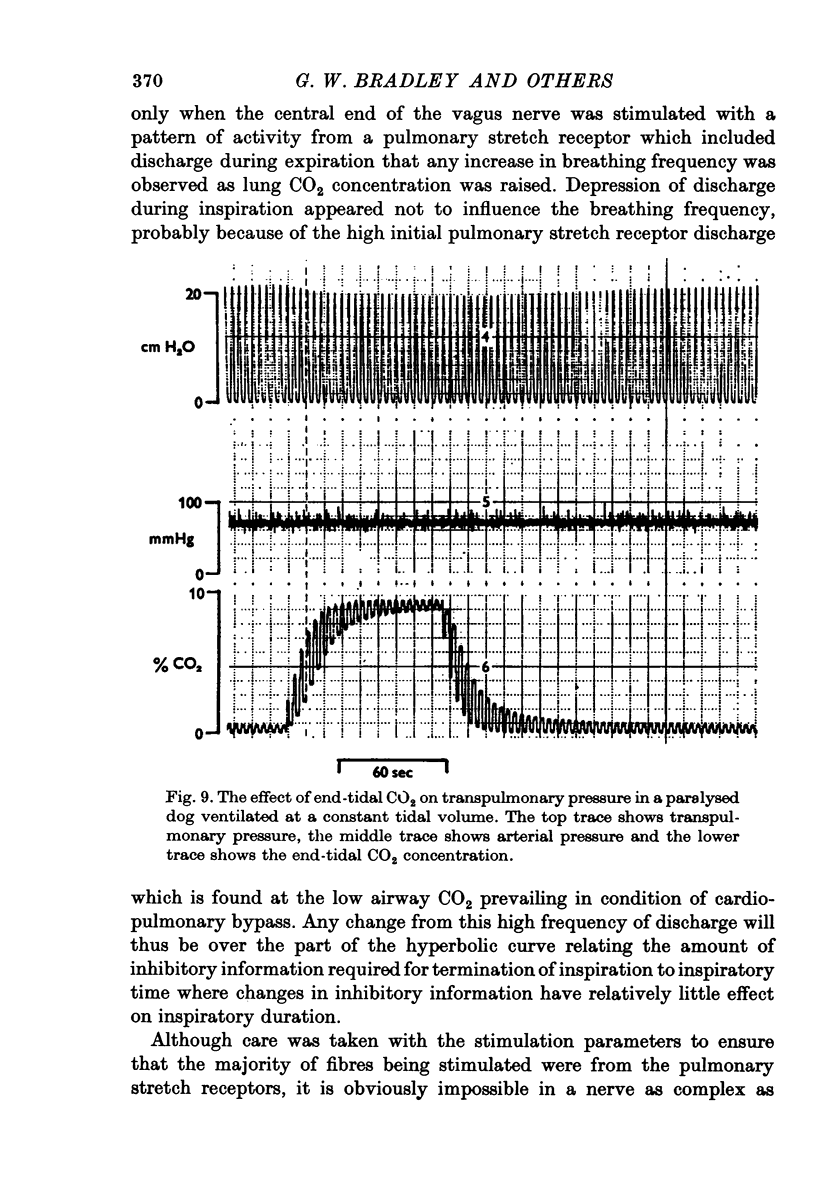


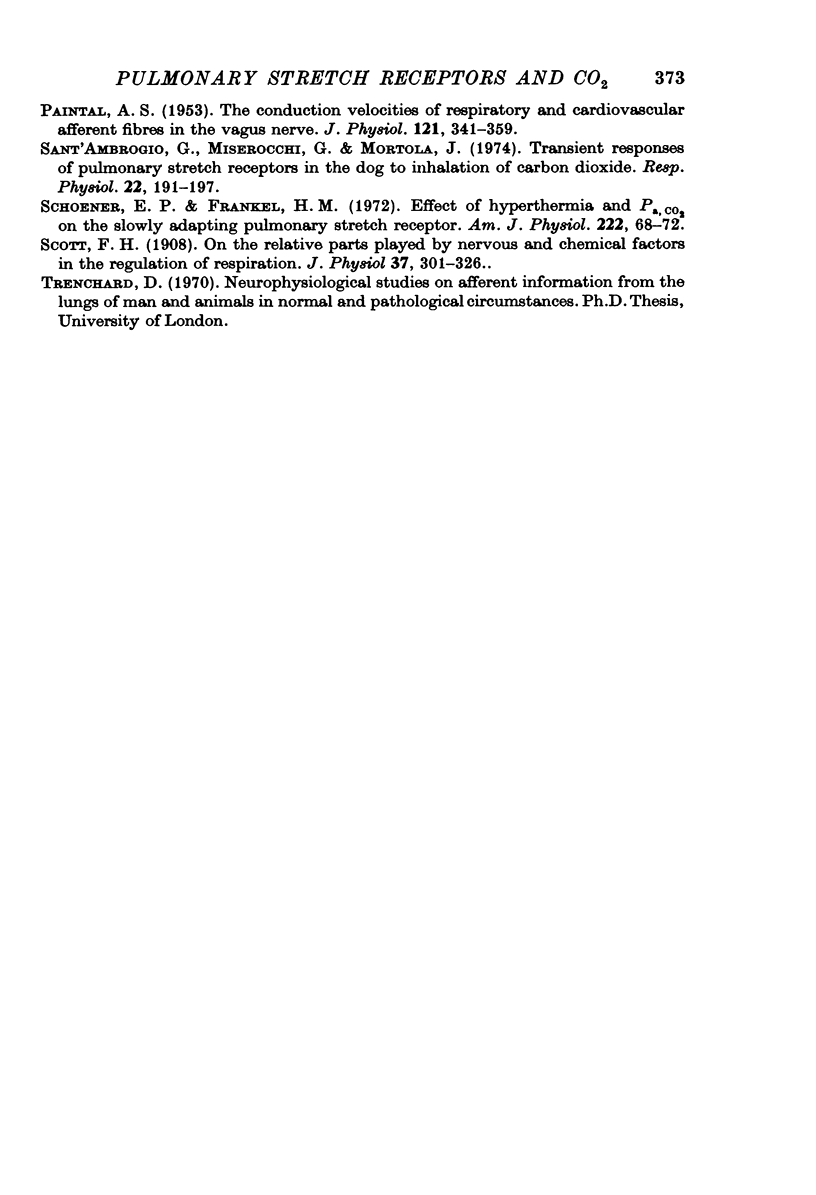
Selected References
These references are in PubMed. This may not be the complete list of references from this article.
- Bartlett D., Jr, Sant'ambrogio G. Effects of local and systemic hypercapnia on the discharge of stretch receptors in the airways of the dog. Respir Physiol. 1976 Feb;26(1):91–99. doi: 10.1016/0034-5687(76)90054-2. [DOI] [PubMed] [Google Scholar]
- Bartoli A., Bystrzycka E., Guz A., Jain S. K., Noble M. I., Trenchard D. Studies of the pulmonary vagal control of central respiratory rhythm in the absence of breathing movements. J Physiol. 1973 Apr;230(2):449–465. doi: 10.1113/jphysiol.1973.sp010197. [DOI] [PMC free article] [PubMed] [Google Scholar]
- Bartoli A., Cross B. A., Guz A., Jain S. K., Noble M. I., Trenchard D. W. The effect of carbon dioxide in the airways and alveoli on ventilation; a vagal reflex studied in the dog. J Physiol. 1974 Jul;240(1):91–109. doi: 10.1113/jphysiol.1974.sp010601. [DOI] [PMC free article] [PubMed] [Google Scholar]
- Bradley G. W., von Euler C., Marttila I., Roos B. Transient and steady state effects of CO-2 on mechanisms determining rate and depth of breathing. Acta Physiol Scand. 1974 Nov;92(3):341–350. doi: 10.1111/j.1748-1716.1974.tb05752.x. [DOI] [PubMed] [Google Scholar]
- Clark F. J., von Euler C. On the regulation of depth and rate of breathing. J Physiol. 1972 Apr;222(2):267–295. doi: 10.1113/jphysiol.1972.sp009797. [DOI] [PMC free article] [PubMed] [Google Scholar]
- DAVIS H. L., FOWLER W. S., LAMBERT E. H. Effect of volume and rate of inflation and deflation on transpulmonary pressure and response of pulmonary stretch receptors. Am J Physiol. 1956 Dec;187(3):558–566. doi: 10.1152/ajplegacy.1956.187.3.558. [DOI] [PubMed] [Google Scholar]
- Guz A., Trenchard D. W. Pulmonary stretch receptor activity in man: a comparison with dog and cat. J Physiol. 1971 Mar;213(2):329–343. doi: 10.1113/jphysiol.1971.sp009385. [DOI] [PMC free article] [PubMed] [Google Scholar]
- Knox C. K. Characteristics of inflation and deflation reflexes during expiration of the cat. J Neurophysiol. 1973 Mar;36(2):284–295. doi: 10.1152/jn.1973.36.2.284. [DOI] [PubMed] [Google Scholar]
- Mustafa M. E., Purves M. J. The effect of CO 2 upon discharge from slowly adapting stretch receptors in the lungs of rabbits. Respir Physiol. 1972 Oct;16(2):197–212. doi: 10.1016/0034-5687(72)90051-5. [DOI] [PubMed] [Google Scholar]
- PAINTAL A. S. The conduction velocities of respiratory and cardiovascular afferent fibres in the vagus nerve. J Physiol. 1953 Aug;121(2):341–359. doi: 10.1113/jphysiol.1953.sp004950. [DOI] [PMC free article] [PubMed] [Google Scholar]
- Sant'Ambrogio G., Miserocchi G., Mortola J. Transient responses of pulmonary stretch receptors in the dog to inhalation of carbon dioxide. Respir Physiol. 1974 Oct;22(1-2):191–197. doi: 10.1016/0034-5687(74)90057-7. [DOI] [PubMed] [Google Scholar]
- Schoener E. P., Frankel H. M. Effect of hyperthermia and Pa CO2 on the slowly adapting pulmonary stretch receptor. Am J Physiol. 1972 Jan;222(1):68–72. doi: 10.1152/ajplegacy.1972.222.1.68. [DOI] [PubMed] [Google Scholar]
- Scott F. H. On the relative parts played by nervous and chemical factors in the regulation of respiration. J Physiol. 1908 Sep 16;37(4):301–326. doi: 10.1113/jphysiol.1908.sp001272. [DOI] [PMC free article] [PubMed] [Google Scholar]


